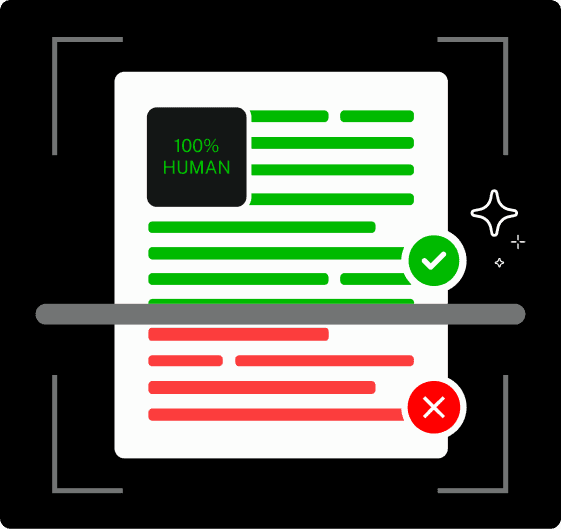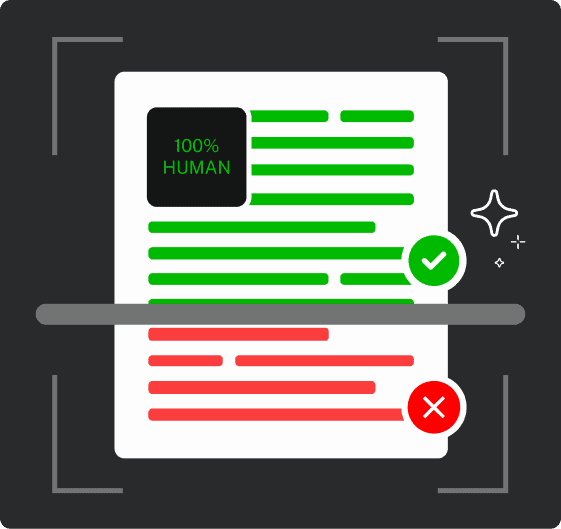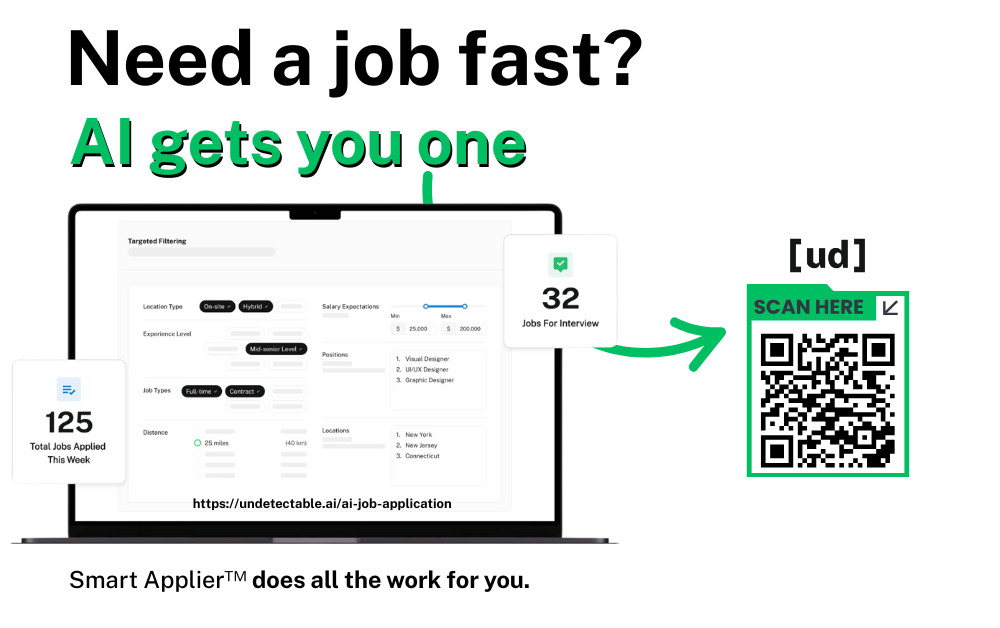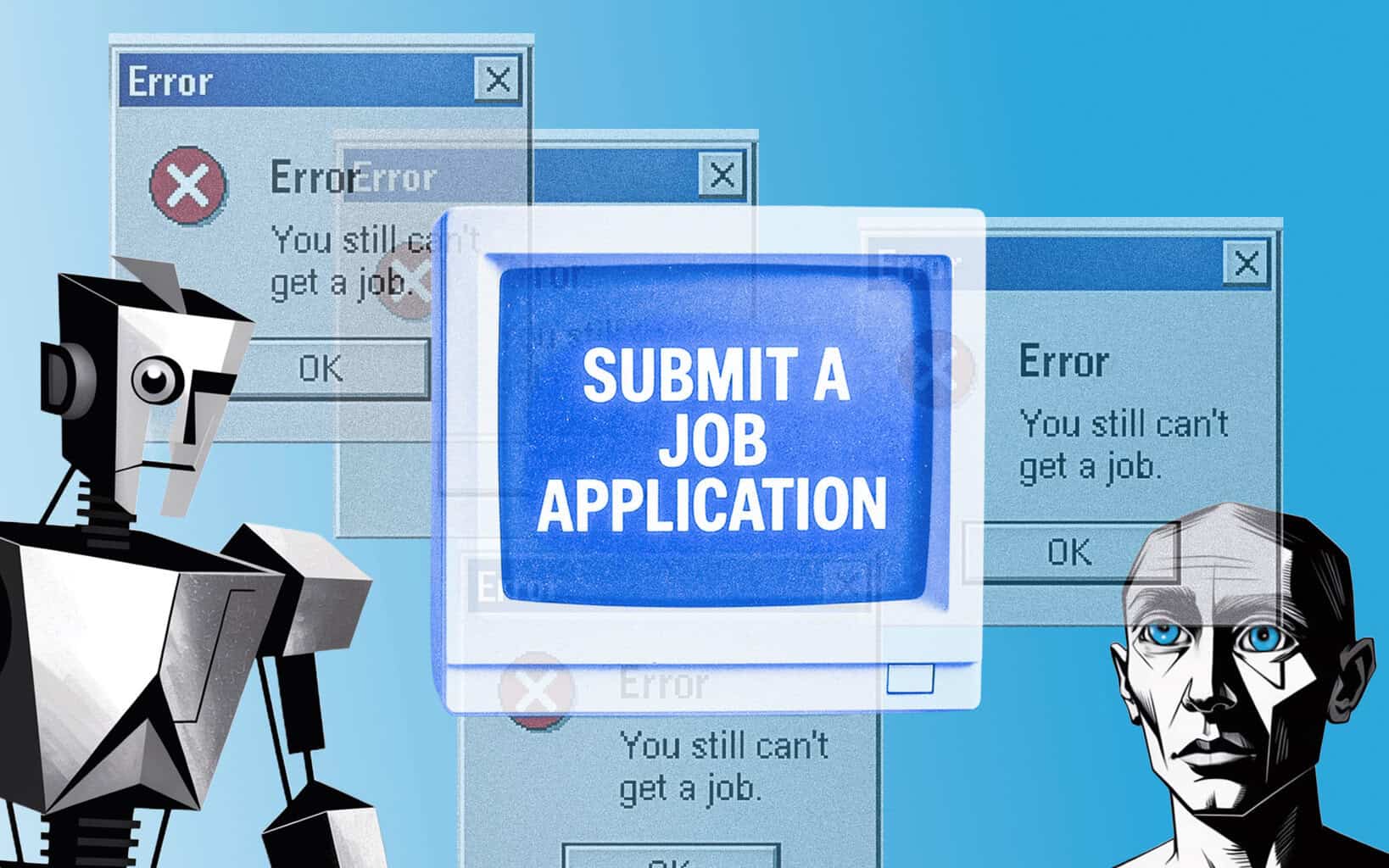Job seekers are struggling with low response rates while barely using AI tools that could help them succeed. Despite widespread acceptance of AI in job applications, adoption remains extremely low.
We surveyed 100 unemployed Americans between the ages of 18 and 60 who are currently seeking jobs. We wanted to understand the challenges they were facing and their thoughts on using AI.
Key Findings
📊 The Response Rate Crisis
- 92% of job seekers struggle to get adequate responses
- Only 8% receive “many responses”
- 55% receive “some responses”
- 37% receive NO responses at all
🤖 AI Adoption is Surprisingly Low
- Only 16% use AI to help with job applications
- 84% don’t use AI tools at all
- This despite 87% of companies using AI in their hiring process
💭 Attitudes vs. Behavior Gap
- 74% believe using AI is acceptable for qualified candidates
- 26% think using AI isn’t okay
- Clear disconnect: Most think it’s fine but aren’t using it
⚖️ Split on Employer AI Restrictions
- 53% believe it’s fair to use AI ethically
- 47% think employers can prohibit AI use
- Job seekers are genuinely divided on this issue
🔄 Mixed Views on Auto-Apply Tools
- 33% – “It’s helpful and people need it”
- 50% – “It might be helpful, but people don’t need it”
- 17% – “It’s not helpful, one-by-one is better”
Top Job Application Challenges
Based on 100 open-ended responses, the biggest frustrations are:
- Not getting responses (35+ mentions)
- Time-consuming process (20+ mentions)
- Technical/website issues (15+ mentions)
- Fake jobs & unrealistic requirements (12+ mentions)
- Resume tailoring difficulties (10+ mentions)
Bottom Line
The Opportunity: With 84% of job seekers not using AI while 92% struggle with responses, early AI adopters could gain a significant competitive advantage.
The Reality Check: Job seekers are facing a broken system—response rates have dropped 3X since 2021—but most aren’t leveraging available tools to improve their odds.


Never Worry About AI Detecting Your Texts Again. Undetectable AI Can Help You:
- Make your AI assisted writing appear human-like.
- Bypass all major AI detection tools with just one click.
- Use AI safely and confidently in school and work.
The Disconnect: While most job seekers accept AI use in principle, very few are actually using it in practice.
Key Takeaways
The job application process is broken, and AI might be the solution job seekers didn’t know they needed. Our latest survey of 100 active job seekers reveals a stark disconnect between the challenges people face and the tools they’re actually using to overcome them.
Bottom line: While 92% of job seekers struggle to get responses from employers, only 16% have embraced AI tools that could dramatically improve their success rates. Even more telling—74% believe using AI is acceptable for qualified candidates, yet most aren’t acting on this belief.
The Response Rate Crisis: Numbers Don’t Lie
The Harsh Reality of Modern Job Applications
Our survey data paints a sobering picture of today’s job market. Of the 100 job seekers we surveyed:
- 8% Got many responses
- 55% Got some responses
- 37% Got NO responses
This means 92% of active job seekers are struggling to get meaningful responses from employers.
This aligns with troubling industry data. Recent research shows job application response rates have declined significantly, with applicants now 3X less likely to hear back than three years ago.
The Volume Problem
According to Glassdoor, each corporate job posting attracts approximately 250 resumes, with only 4-6 candidates getting called for interviews. Meanwhile, the percentage of unemployed workers submitting more than 10 applications per month grew from 15% in 1979-80 to 30% in 2013-19.
The math is simple: More applications + same number of jobs = lower individual success rates.
The AI Adoption Gap: A Massive Opportunity
Current AI Usage is Surprisingly Low
Despite the potential benefits, AI adoption among job seekers remains minimal. According to our survey:
- Use AI for applications — 16 % (16 respondents)
- Don’t use AI — 84 % (84 respondents)
This low adoption rate is particularly striking given that 87% of companies now use AI in their recruitment process, and more than 65% of recruiters have used AI to hire people.
The Perception vs. Reality Divide
When we asked about feelings toward AI in job applications, the responses revealed interesting contradictions:
Auto-Apply AI Software Sentiment:
- 33% – “It’s helpful and people need it”
- 50% – “It might be helpful, but people don’t need it”
- 17% – “It’s not helpful, applying individually is better”
General AI Usage for Job Applications:
- 74% – “Yes, it’s okay if someone is qualified”
- 26% – “No, using AI to help get a job isn’t okay”
The disconnect is clear: While 74% think AI usage is acceptable and 83% see potential benefits, only 16% actually use it.
What Job Seekers Really Struggle With
The Open-Ended Reality Check
When we asked respondents about the hardest parts of applying for jobs online, several themes emerged from the 100 responses:
Top Challenges by Frequency:
- Not getting responses (35+ mentions)
- “never getting a response not knowing why”
- “Not getting responses, respond to as quick as you want”
- “Getting any sort of response from the employer. Many don’t even view applications”
- Time and effort intensity (20+ mentions)
- “It takes so much time”
- “It’s daunting and time consuming and usually have to tailor them to each job”
- “The time. It time consuming to apply one at a time”
- Technical and process issues (15+ mentions)
- “The websites malfunction often”
- “Sometimes losing the Internet. Not being able to save or send”
- “Not necessarily a hard part, but having to upload your resume just to manually fill out what you recently uploaded”
- Fake jobs and unrealistic requirements (12+ mentions)
- “Finding jobs that are actually hiring and not just posting listings to see how many people they can get to apply”
- “The requirements for jobs are unrealistic for the average person”
- “They ask for years of experience that what I have for life”
- Resume and tailoring challenges (10+ mentions)
- “Working on your resume is the hardest”
- “you have to get the right keywords or the system will trash your resume”
- “it is hard to create different versions when you are applying to several types of jobs”
The AI Ethics Debate: Job Seekers Are Split
Employer Prohibitions: A 50/50 Split
One of our most revealing questions addressed whether employers should be able to prohibit AI use in applications:
- “It’s fair to use AI ethically” — 53 % (53 respondents)
- “Employers can prohibit AI” — 47 % (47 respondents)
This near-even split suggests the job seeker community is genuinely divided on the ethics of AI assistance in applications.
The Industry Perspective
The debate becomes more complex when we consider that 44% of recruiters say saving time is one of the main reasons to implement AI in hiring, while 35% worry that AI may exclude candidates with unique skills and experiences.
If employers are using AI to screen candidates, is it fair for them to prohibit candidates from using AI to optimize their applications?
The Broader Context: AI is Reshaping Work
Job Market Transformation
AI-related job postings reached a peak of about 16,000 monthly in October 2024, with the United States accounting for 29.4% of all new AI job postings globally—an 18.8% increase year over year.
Meanwhile, the World Economic Forum expects that 22% of today’s total jobs will be affected by creation and destruction due to AI transformation over 2025-2030, creating 170 million new jobs while displacing 92 million.
Skills Revolution
Workers can expect that two-fifths (39%) of their existing skill sets will be transformed or become outdated over the 2025-2030 period. This makes staying current with AI tools not just helpful for job applications, but essential for long-term career survival.
Recommendations: Bridging the AI Gap
For Job Seekers
- Start experimenting with AI tools now
- Resume optimization tools
- Cover letter generation
- Interview preparation assistants
- Application tracking systems
- Focus on quality over quantity
- Use platforms with higher response rates like Indeed (20-25%) over LinkedIn Easy Apply (3-13%)
- Tailor applications using AI to improve ATS compatibility
- Leverage networking
- 85% of jobs are filled through referrals according to LinkedIn
- Use AI to help craft networking messages and follow-ups
For Employers
- Clarify AI policies
- If using AI in screening, consider allowing candidates to use AI in applications
- Provide clear guidelines on acceptable AI usage
- Improve response rates
- 60% of job candidates abandon applications they find too long or unwieldy
- Implement automated acknowledgment systems
- Address the fundamental disconnect
- Job seekers are 8X more likely to be hired through recruiter sourcing than direct applications
- Consider proactive talent sourcing strategies
The Future of AI in Job Applications

Using AI tools like Undetectable AI’s new Smart Applier is necessary to gain a competitive edge in the current job market where people are increasingly searching for work while the number of jobs are decreasing.
Smart Applier uploads your resume, finds matching jobs, and automatically submits customized applications while you sleep. Instead of sending 100 generic applications and getting 8 responses, it tailors each application to beat ATS filters and stand out to hiring managers.
Don’t have a resume? The AI can make one for you!
What’s Coming Next
AI is playing a larger role in both job hunting and hiring processes, helping job seekers fine-tune resumes and cover letters while helping employers winnow down applicants. However, the technology isn’t perfect—some AI resume screeners have been found to make decisions based on irrelevant factors like the name “Thomas” appearing on resumes.
The Opportunity Window
With 84% of job seekers not yet using AI tools while 92% struggle with response rates, there’s a massive opportunity for early adopters to gain a competitive advantage. As 30% of workers worldwide fear AI might replace their jobs within the next three years, learning to work with AI rather than against it becomes crucial.
Conclusion: The AI Application Era is Here
Our survey reveals a job market in transition. While job seekers face unprecedented challenges—with 92% struggling to get responses and response rates at historic lows—most haven’t yet embraced the AI tools that could level the playing field.
The early winners will be those who:
- Embrace AI tools for application optimization
- Use data-driven approaches to job searching
- Focus on platforms and strategies with higher success rates
- Develop AI skills that make them valuable to employers
The question isn’t whether AI will transform job applications — it already has — its whether job seekers will adapt quickly enough to benefit from the transformation.
This analysis is based on survey data collected from 100 active job seekers in March 2025, combined with industry research and employment statistics. For methodology questions or to participate in future research, contact our research team. ([email protected]).
Sources:
- Aura AI Job Trends 2025 Report
- Upplai Job Application Response Rate Study
- U.S. Bureau of Labor Statistics Employment Projections
- World Economic Forum Future of Jobs Report 2025
- Federal Reserve Bank of St. Louis Employment Research
- Various industry surveys and reports cited throughout
About This Research: This blog post analyzes original survey data from 100 job seekers combined with the latest industry research to provide insights into the evolving role of AI in job applications. All statistics and quotes are properly cited and sourced from recent studies and reports. The survey was administered to 100 North Americans aged 18 to 65 who were actively unemployed and seeking employment.
Fair Use
Please feel free to use this information in an article or blog post, so long as you provide us with a link and citation. For access to the complete survey data set, don’t hesitate to get in touch with us directly.
